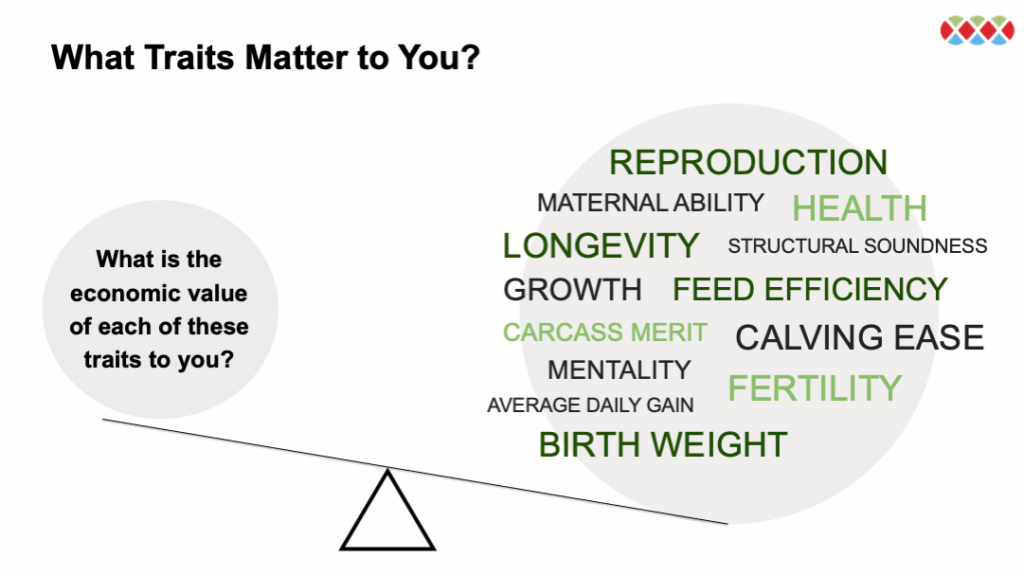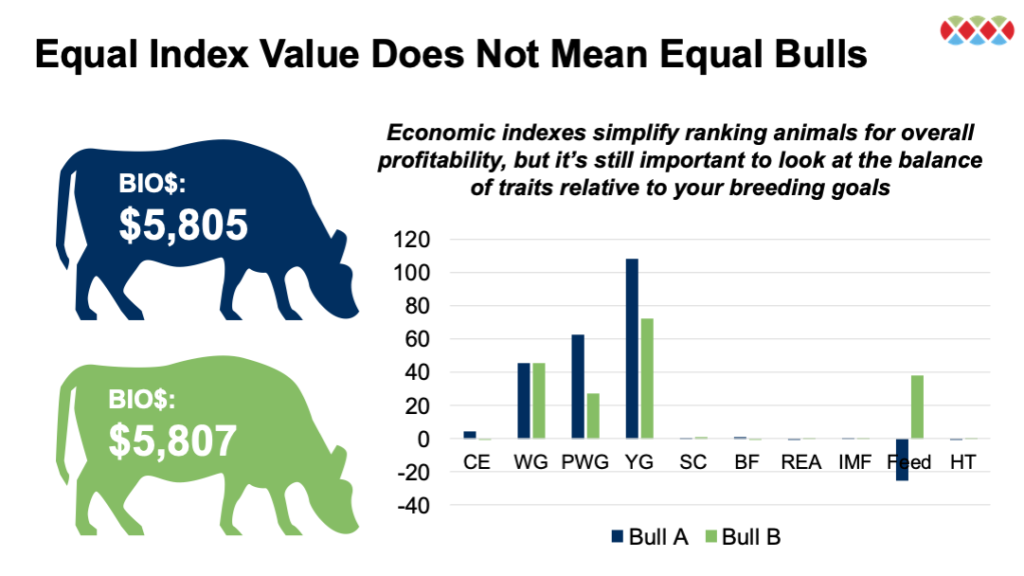Understanding Selection Indexes

What is it?
A selection index is a tool used to rank animals when selecting or culling breeding stock. Selection indexes simplify selection decisions, by providing a single number to rank each animal by combining breeding values for many different traits.
Economic selection indexes are a special type of index that weight the traits included based on the economic value of that trait to an operation. Complex bio-economic models take into account current market conditions, input costs and more to determine the value each trait receives in the index.
AgSights’ BIO$ index is an example of an economic index, combining birthweight, weaning gain, post-weaning gain, fertility (scrotal circumference), and ultrasound-measured rib eye area, back fat and marbling. Economic indexes are designed using certain assumptions that make them suitable for most operations. However, operations can also use their own breeding objectives to design a Custom Index with the CBIN Dashboard Selection Tool.

How Do I Use It?
When using an index to select animals, the higher the index value the better an animal ranks. You can use the index values as a quick way of making selection decisions that balance the importance of multiple traits. For example, you may choose to only select the top 50% of a heifer crop to retain as replacements or cull the bottom 10% of the herd each year as a method of improving the overall genetics of the herd.
Although indexes provide a quick tool to rank animals, there are several other factors to consider when selecting breeding stock. It’s recommended you use selection indexes to make a list of potential breeding candidates and then review other production records and information (e.g., health treatments, conformation) to finalize decisions.
For bull-buying decisions, in addition to using the selection index value, you should also look at the balance of EPDs (Expected Progeny Differences) or ABCs (Across Breed Comparisons) for each trait that is important to your breeding objectives. This is because although two bulls with similar index values are expected to have similar levels of overall profitability, they could actually have very different genetics to contribute to your operation. In the example below, we can see that Bull A (BIO$: $5,805) has higher ABCs for growth traits while Bull B (BIO$: $5,807) has stronger feed efficiency. Depending on the operation’s breeding objectives, Bull A or Bull B could be a better fit.



 Back to all Resources
Back to all Resources